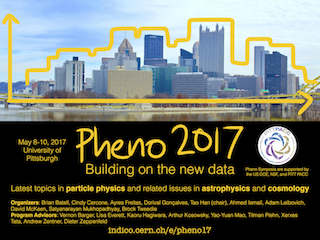Speaker
Description
The Higgs potential consists of an unexplored territory in which the electroweak symmetry breaking is triggered, and it is moreover directly related to the nature of the electroweak phase transition. Measuring the Higgs boson trilinear and quartic couplings, or getting equivalently information on the exact shape of the Higgs potential, is therefore an essential task. However, direct measurements beyond the trilinear self-interaction of the Higgs boson is a huge challenge, even for a future proton-proton collision machine expected to operate at a center-of-mass energy of 100 TeV. We present a novel approach to extract model-independent constraints on the triple and quartic Higgs self-coupling by investigating triple Higgs-boson hadroproduction at a center-of-mass energy of 100 TeV, focusing on the $\tau \tau b \bar{b} b \bar{b}$ channel which was previously overlooked due to a supposedly too large background. It is thrown into sharp relief that the assist from a kinematic bounding variable and a boosted configuration ensures a high signal sensitivity. We derive the luminosities that would be required to constrain given deviations from the Standard Model in the Higgs self-interactions, showing for instance that a 2 sensitivity could be achieved for an integrated luminosity of 30 $\rm ab^{-1}$ when Standard Model properties are assumed. Our results, overlayed with trilinear Higgs coupling studies from di-Higgs production, could hence be useful for the design of a future hadronic collider.




